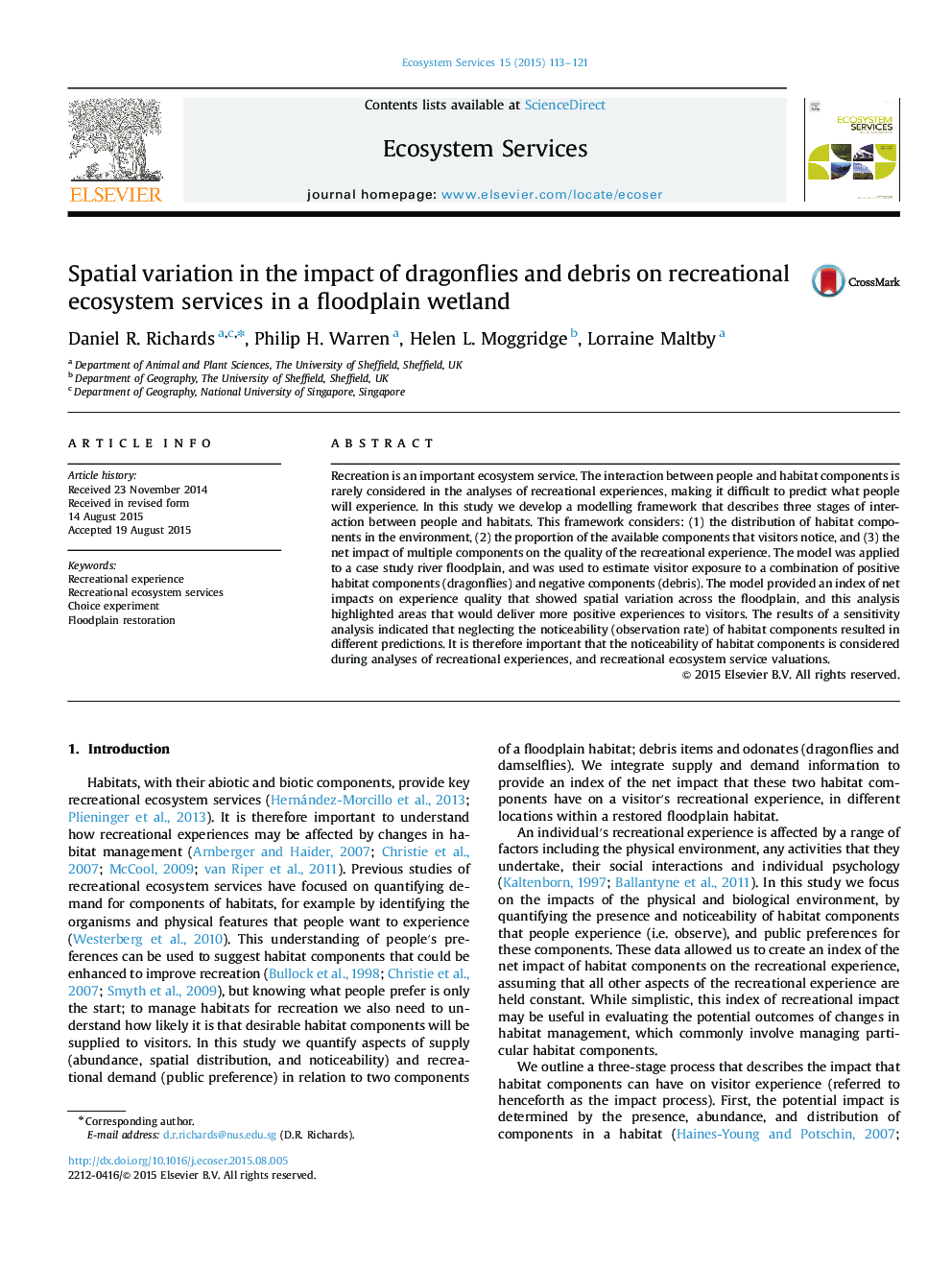| Article ID | Journal | Published Year | Pages | File Type |
|---|---|---|---|---|
| 6556733 | Ecosystem Services | 2015 | 9 Pages |
Abstract
Recreation is an important ecosystem service. The interaction between people and habitat components is rarely considered in the analyses of recreational experiences, making it difficult to predict what people will experience. In this study we develop a modelling framework that describes three stages of interaction between people and habitats. This framework considers: (1) the distribution of habitat components in the environment, (2) the proportion of the available components that visitors notice, and (3) the net impact of multiple components on the quality of the recreational experience. The model was applied to a case study river floodplain, and was used to estimate visitor exposure to a combination of positive habitat components (dragonflies) and negative components (debris). The model provided an index of net impacts on experience quality that showed spatial variation across the floodplain, and this analysis highlighted areas that would deliver more positive experiences to visitors. The results of a sensitivity analysis indicated that neglecting the noticeability (observation rate) of habitat components resulted in different predictions. It is therefore important that the noticeability of habitat components is considered during analyses of recreational experiences, and recreational ecosystem service valuations.
Related Topics
Life Sciences
Agricultural and Biological Sciences
Agricultural and Biological Sciences (General)
Authors
Daniel R. Richards, Philip H. Warren, Helen L. Moggridge, Lorraine Maltby,
